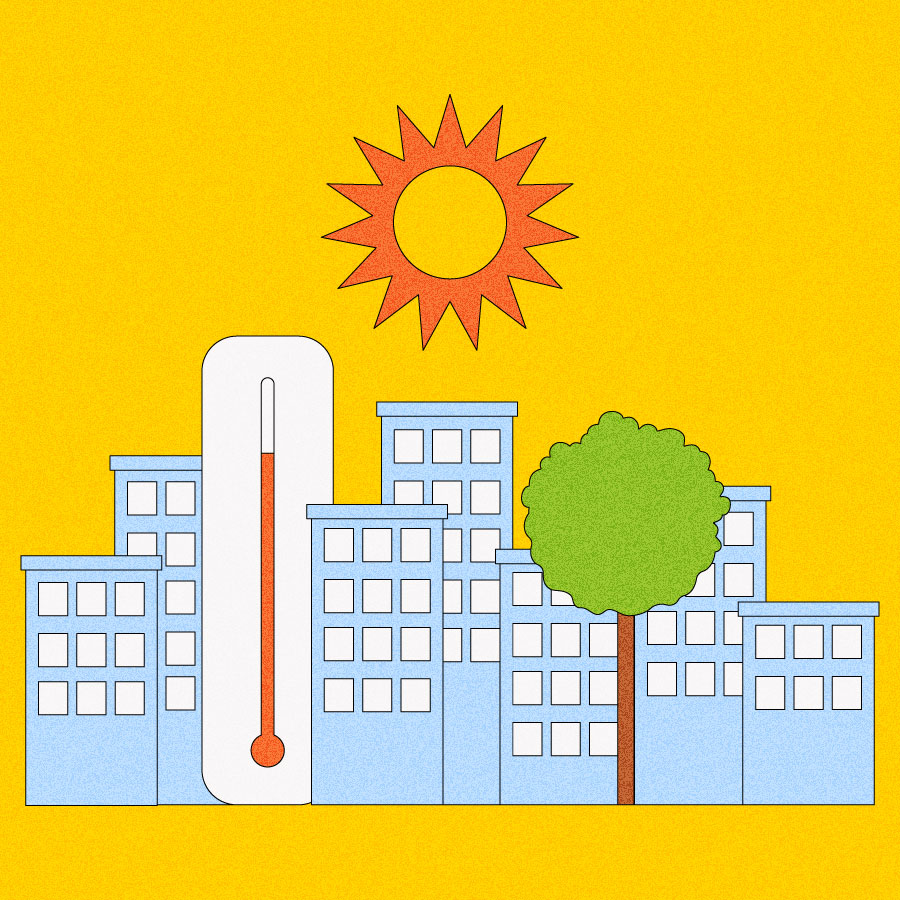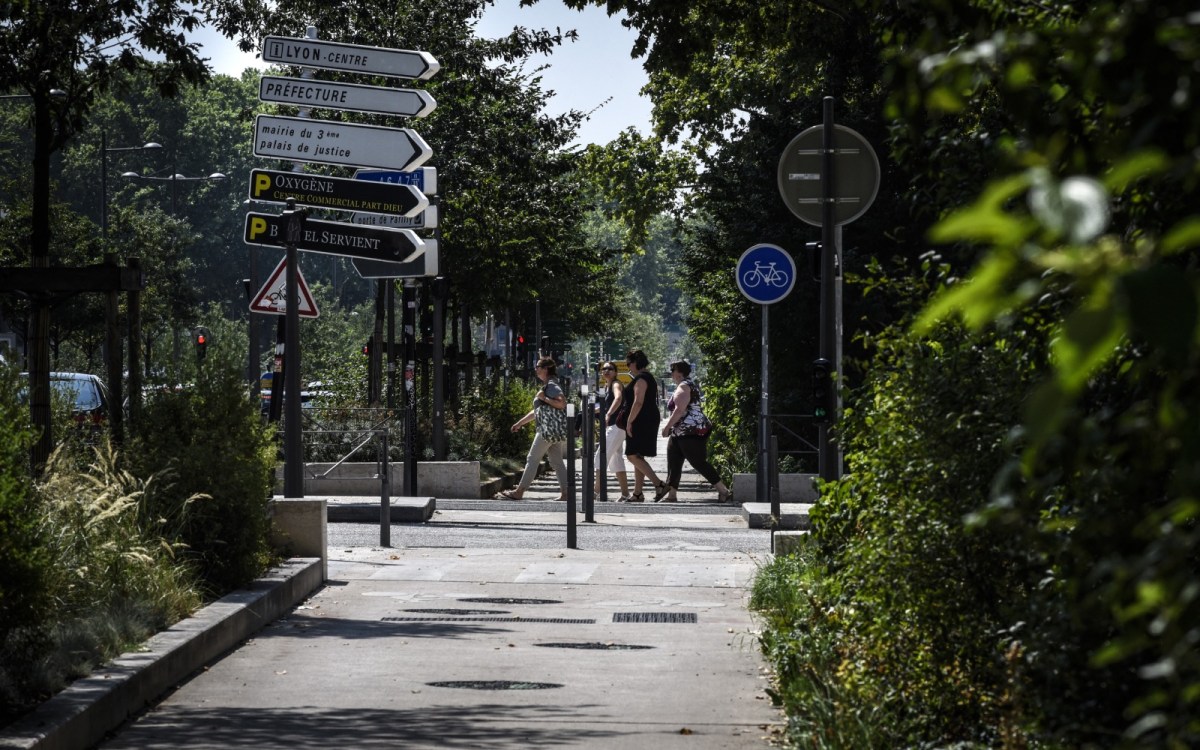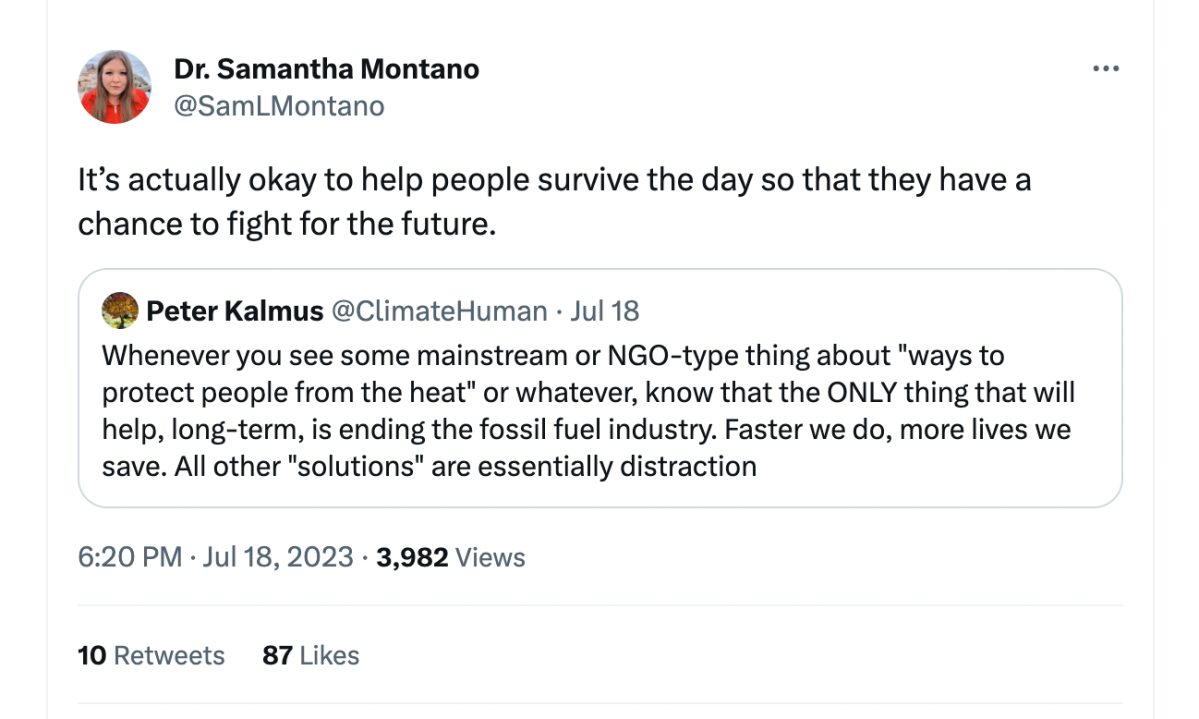
The vision
You usually walk to work along the waterfront. But on a scorching summer day like this, the only way to go is Canopy Street. The serpentine path adds 10 minutes to your commute — more if you catch sight of a bird you want to identify — the only reason your chronically late self doesn’t go this way in the cooler months.
You stop to fill your bottle at a water station beneath a moss-covered tree. Misters gently spritz overhead. A bird lands on the white pavement beside you, and you check your watch before allowing yourself to glance at it …
— a drabble by Claire Elise Thompson
The spotlight
Hey there, fam. In response to our newsletter last week spotlighting extreme heat solutions, we heard from several of y’all who were curious for more. It seems safe to say that the heat is on a lot of people’s minds — both how we adapt to it, and how we can mitigate this and other impacts of the climate crisis for future generations.
One reader, Katrina Amaral, shared a response that struck at this balance:
As part of the resources for dealing with extreme heat, I would love to see examples of heat-adaptation and climate-change mitigation ordinances or laws that have passed at municipal / state / federal levels. Obviously I as an individual need to stay cool, but it’s time to start thinking about bigger systems change — I want to see not just how to prepare for hot spells, but also how to petition the local government to improve tree equity [and] switch to renewables …
At the core of mitigating the climate crisis is the need to rapidly phase out fossil fuels. Every heat wave should be a reminder of the systemic change needed to prevent these kinds of impacts from getting unthinkably worse in the future. Still, every heat wave today is also a matter of life and death for some. I’ve been thinking a lot about this recent tweet from Samantha Montano, a professor of emergency management and self-described “disasterologist:”
It’s actually okay to help people survive the day so that they have a chance to fight for the future.
Basically, a laser focus on fossil fuels can’t be the only thing that matters. Building a better future for everyone can only happen if we protect people from the deadly impacts that are already here.
So, building on our last newsletter, this week we’re rounding up even more solutions that governments and other entities are implementing to respond to heat waves, prepare for the next one, and mitigate the underlying causes of global heating. Together, they showcase some of the tools cities already have at their disposal to tackle extreme heat, and some of the ways they are innovating.
— Claire Elise Thompson
P.S. All of Grist’s vital coverage on extreme heat, solutions, and more is made possible by people like you — which is why I can’t thank you enough (and I hope I say it enough!) for being here and reading this newsletter. Today, I’m also asking if you would consider showing your support by making a donation to help us fund our ongoing heat coverage. If we raise $12,500 by next Tuesday, a generous Grist donor will unlock a $20,000 gift to keep our work going. If you have the means, we would so appreciate your support! And thanks as always for being a Looking Forward subscriber.
![]()
Cool roofs lowering home temperatures in India: The city of Ahmedabad was the first in India to develop a heat action plan, following a devastating heat wave in 2010. The plan has been through several iterations over the past decade — and one of the latest initiatives is a focus on “cool roofs.” Coating roofs with materials like white reflective paint or tiles can lower indoor temperatures by as much as 5 degrees Celsius. Not only does that protect the health of people inside, it lessens the need for costly and energy-intensive air conditioners. Read more
(In more recent news, researchers at Purdue University have developed a new paint that reflects 98 percent of sunlight — the whitest paint ever. The development could make cool roofs and other surfaces an even more potent solution when the paint becomes commercially available.)
Tree cover for heat islands in Washington: Earlier this year, the state of Washington launched a first-of-its-kind tree equity initiative, committing to expanding and maintaining urban canopies, particularly in lower-income communities of color. Using a tree-equity scoring tool from the nonprofit American Forests, the state determined that nearly 85 percent of urban neighborhoods across Washington lack adequate tree cover. Tree-filled areas can cool the ambient air temperature by up to 9 degrees Fahrenheit, while also sequestering CO2. The initiative brings together municipalities and community groups in efforts to increase tree canopy coverage. Read more
Green corridors in Colombia: Medellín, the second-largest city in Colombia, has been recognized globally for its network of “corredores verdes,” or green corridors. In 2016, the city shifted its approach to urban design to prioritize creating and connecting more green spaces to tackle heat, air quality, and biodiversity. And the project, which began in 2016, included training residents from disadvantaged backgrounds to help plant and maintain the gardens. Three years after the launch, Medellín’s average city temperatures had already been reduced by 2 degrees Celsius. Read more
Air-conditioned bus stops for Thai commuters: Thailand’s capital city of Bangkok opened the country’s first air-conditioned bus stop powered by solar energy earlier this year. The shelter, a pilot project that just launched in April, aims to conserve energy and makes public transit more appealing during hot months by offering travelers a cool place to wait — it even includes free Wi-Fi, charging ports, and a water machine. Read more
Building codes and retrofits for frontline residents in New Mexico: Las Cruces, New Mexico, has updated its construction codes to require new buildings to be “electric-ready” and well insulated. But that doesn’t affect older buildings, which often house the city’s lower-income residents, with poor insulation, failing HVAC systems, and high energy burdens. To address that gap, the city is also taking advantage of funding from the Inflation Reduction Act to offer a retrofit program aimed at frontline residents. As Lisa LaRocque, the city’s sustainability officer, puts it: “Although this doesn’t sound like heat mitigation, the more we stop using fossil fuels and shift to efficient, well-insulated systems, the more resilient we will be during extreme heat events.” Read (or listen to) more
Legal action and local resilience in Baltimore: Baltimore (my former home!) was one of the first cities to sue fossil fuel companies for damages from climate impacts like heat waves and flooding. The city’s case contends that companies like Chevron and ExxonMobil continued burning fossil fuels despite knowing for decades the impact that greenhouse gases were having. The Supreme Court recently declined to hear appeals from these companies, allowing this and other similar cases to move forward in local courts. Baltimore’s case could be a bellwether for the now more than two dozen other suits initiated by cities, states, and counties around the U.S.
Charm City was also the first in the nation to launch resilience hubs: trusted community spaces that can serve as cooling centers, meeting locations, and offer other life-saving resources and information to residents. Read more
See for yourself
Is your city or state doing something interesting to combat extreme heat that we should know about or share with other newsletter readers? Reply to this email and let me know.
A parting shot
Lyon, France, is another city using tree cover and other greenery to reduce the urban heat island effect — by creating a green corridor along Garibaldi Street, a former six-lane highway. The redesign, which was completed in 2018, gave more space to pedestrians, bikes, and buses, as well as plants, and one section also repurposed an underpass as a rainwater-catchment system that irrigates the gardens in the summer.





